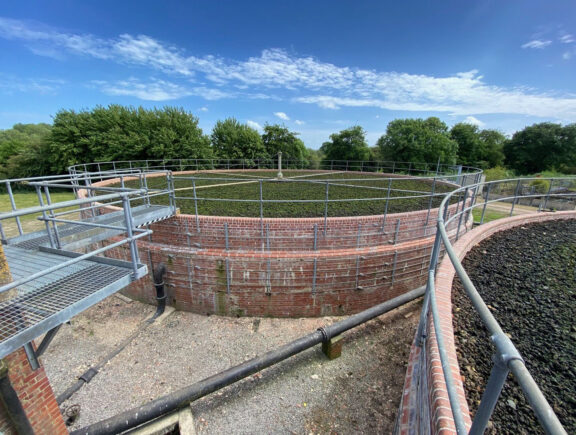A controlled drain down of the reservoir was completed to gain access to the working area, and once the water had been lowered, members of the fisheries team attended site to net and electro-fish the water. A temporary cofferdam was then installed around the immediate working area and the team rescued any fish behind the cofferdam during the dewatering process. The fish were dip netted by hand and placed into an oxygenated transportation tank, before being returned to the top lake.
Silt was pumped into dewatering bags located away from the outfall structure to allow for sufficient access. A mini excavator was then used to break out the existing pipework and prepare for the installation of a new pipework design. At this stage, the team were required to proceed with caution as it was essential that works carried out did not cause any damage to the downstream habitats.
Due to the depth of some of the voids, it was agreed with the client that repairs would include grouting and sprayed concrete application. Steel mesh reinforcement was fixed into place, and short lengths of pipe were installed into the wall at selected positions. Concrete was then sprayed onto the mesh to the required thickness. Following the curing period, grout was pumped through the pipes into the voids behind the walls. Once complete, the short sections of pipe were broken out and the concrete repaired. The large voids at the top of the dam structure were also filled, using a pumpable grout.
The temperature and dissolved oxygen readings were monitored twice a day, including weekends for the duration of the project. The site team had an emergency process in place, including pre-installed aeration equipment. The fisheries team were also on standby in case the readings became critical for the remaining fish. Working methods and techniques were reviewed by the site ecologist to ensure minimal impact on the environment during works and for reinstatement once the reservoir had been completed.
On completion of the project, barley straw sausages and vegetated floating islands were installed to help combat algae growth within the reservoir. In addition, the floating islands created habitat and fish refuge.
Following installation, the dam was handed back to the client for inspection and sign off.











